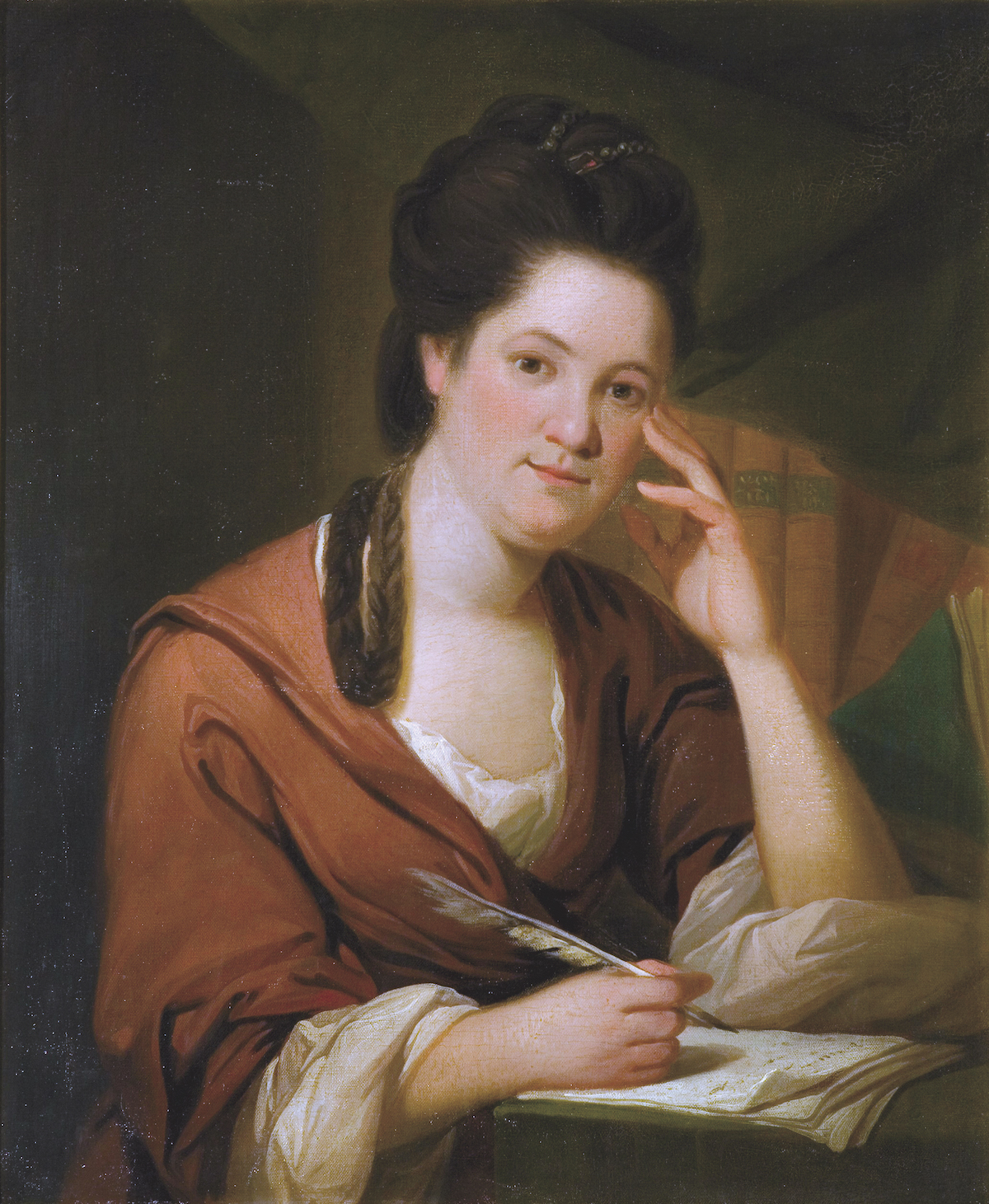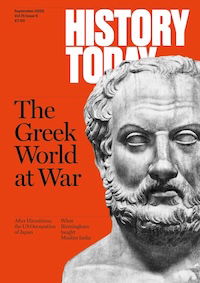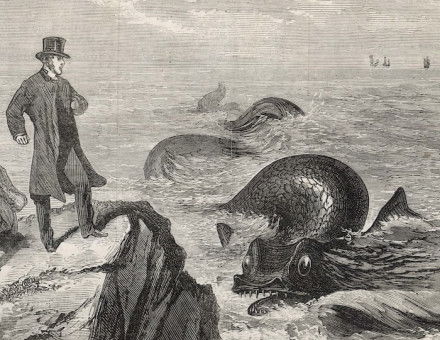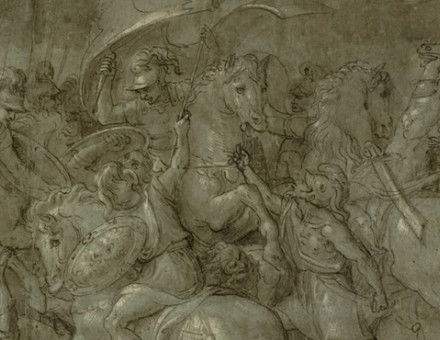‘Bluestockings’ by Susannah Gibson review
Bluestockings: The First Women’s Movement by Susannah Gibson makes a case for 18th-century proto-feminism. Do the Bluestockings fit?

The problem with 18th-century women, for the feminist public historian, is that they just won’t fit the narrative. We all know about the Suffragettes, so the thinking goes, and we are fairly sure that their forerunner Mary Wollstonecraft can be called a proto-feminist. Surely, a generation or two before Wollstonecraft, there were also brilliant women organising to topple the patriarchy?
Such a narrative underpins Susannah Gibson’s Bluestockings. The book argues exactly what its title suggests: that the group of female intellectuals loosely associated with the metropolitan salons of Elizabeth Montagu made up, collectively, ‘the first women’s liberation movement’. Across an interlinked series of biographical case studies, Gibson attempts to cast women writers ranging from Elizabeth Carter and Hannah More to Frances Burney and Hester Thrale Piozzi as proto-feminists who ‘laid the foundations for a whole new worldview’. While many full-length biographies of the key individuals are already available, an accessible group study such as this one is long overdue. Gibson is an engaging writer, with a good eye for entertaining detail. I am grateful, for example, to learn that Hannah More’s cats were named Passive Obedience and Non-Resistance.
But Gibson’s core aim – to present her subjects as a grouping both progressive and cohesive – is only credible if one takes a very selective approach. The problem with characterising the Bluestockings as a new beacon of feminist progressivism is apparent from the first few pages when, in order for her story to make sense, Gibson needs to show that the society upon which the Bluestockings exploded was entirely unenlightened on questions of women’s capabilities. ‘Women were held in low regard in the eighteenth century’, she informs us. Well, yes, by some people, such as the author of the 1739 pamphlet ‘MAN SUPERIOR TO WOMAN’, one of three sources cited as evidence of universal low regard. It is not mentioned, however, that the author was responding to an earlier pamphlet by ‘Sophia, a Person of Quality’ entitled ‘WOMAN NOT INFERIOR TO MAN’, and that his sally was quickly matched by another called ‘WOMAN’S SUPERIOR EXCELLENCE OVER MAN’. Such a curious omission prompts reflection on the many works published by both men and women before or around this time which celebrate female learning, virtue and skill. But to acknowledge such works would complicate the narrative: and so they go unacknowledged.
Such selectivity can also be found in the case studies of individual Bluestocking writers which follow. These vignettes generally emphasise the daring, the sisterly and the emancipatory at the expense of other, often contradictory, material. Although Gibson occasionally admits that her subjects internalised a fair amount of misogyny, or that they could be mean to one another, she doesn’t really convey the emphasis and impact of their less progressive views. To take one blatant example, Hannah More’s politically reactionary side – exemplified by her Cheap Repository Tracts project – is almost entirely suppressed.
To an extent, I sympathise with what Gibson is trying to do. There is a large history-hungry audience that is desperate for 18th-century women writers to be intersectional feminists, kickass revolutionaries and secret radicals. I understand well the temptation to give them what they want – and on occasion, in my own work, have succumbed to it. It’s even arguable that there is a moral imperative, after centuries of critical neglect, to centre the aspects of such women’s biographies that make them seem to speak to our present moment.
What is a bit harder to stomach, though, is Gibson’s apparent lack of interest in the things her subjects actually wrote. Given that their literary compositions were what qualified them for fame in the first place, one might expect some significant insights into the plays, poems, novels, life writings, conduct books and criticism which made the Bluestockings impossible to ignore. But, aside from a snippet or two from Hannah More’s ‘Bas Bleu’ and other short texts, the reader gets startlingly little textual engagement. Full books – important ones – are relegated to brief descriptive paragraphs. In her Acknowledgments, Gibson notes the effect of the pandemic on her ability to access archives; presumably she was also unable to access many early or modern editions of published writings or the rich recent scholarship on them.
This is a great shame, because lack of familiarity with their writings seriously affects Gibson’s ability to understand her subjects. For example, the young Frances Burney is described, based on a phrase in one letter, as ‘idolis[ing]’ Elizabeth Montagu and ‘unable to imagine a more perfect embodiment of womanhood’. In fact, Burney’s suppressed play The Witlings contains a vicious satirical portrait of Montagu, and her characterisation of the older woman as ‘our sex’s Glory’ is almost certainly ironic. Gibson’s two-dimensional portrait of the dazzled, deferential ‘shy little Burney’ is unrecognisable to anyone who has read her gloriously bitchy diaries. Similarly, Gibson’s brief reading of Ann Yearsley’s poetry addressed to Hannah More is painfully literal, acknowledging none of the hesitancies, ironies and figurative tangles that hint at Yearsley’s discomfort with More and Montagu’s patronage.
This, more than the ideological selectivity, matters. It matters because Gibson’s subjects held their literary achievements dear, and it is as imaginative writers that we should remember them. It also matters because it is in the rifts, disagreements and differences between them that we often find the most interesting insights into what the Bluestockings meant – or didn’t mean. These women chose, in their published works as well as their private conversations, to emphasise their individualities and draw attention to their differences rather than adhere to any sort of group identity. That is, they resisted the narratives imposed upon them. It is hard to come away from this book without feeling that, albeit with the best intentions, they have been somewhat flattened.
-
Bluestockings: The First Women’s Movement
Susannah Gibson
John Murray, 352pp, £20
Buy from bookshop.org (affiliate link)
Sophie Coulombeau is Senior Lecturer in 18th-century English Literature at the University of York.






